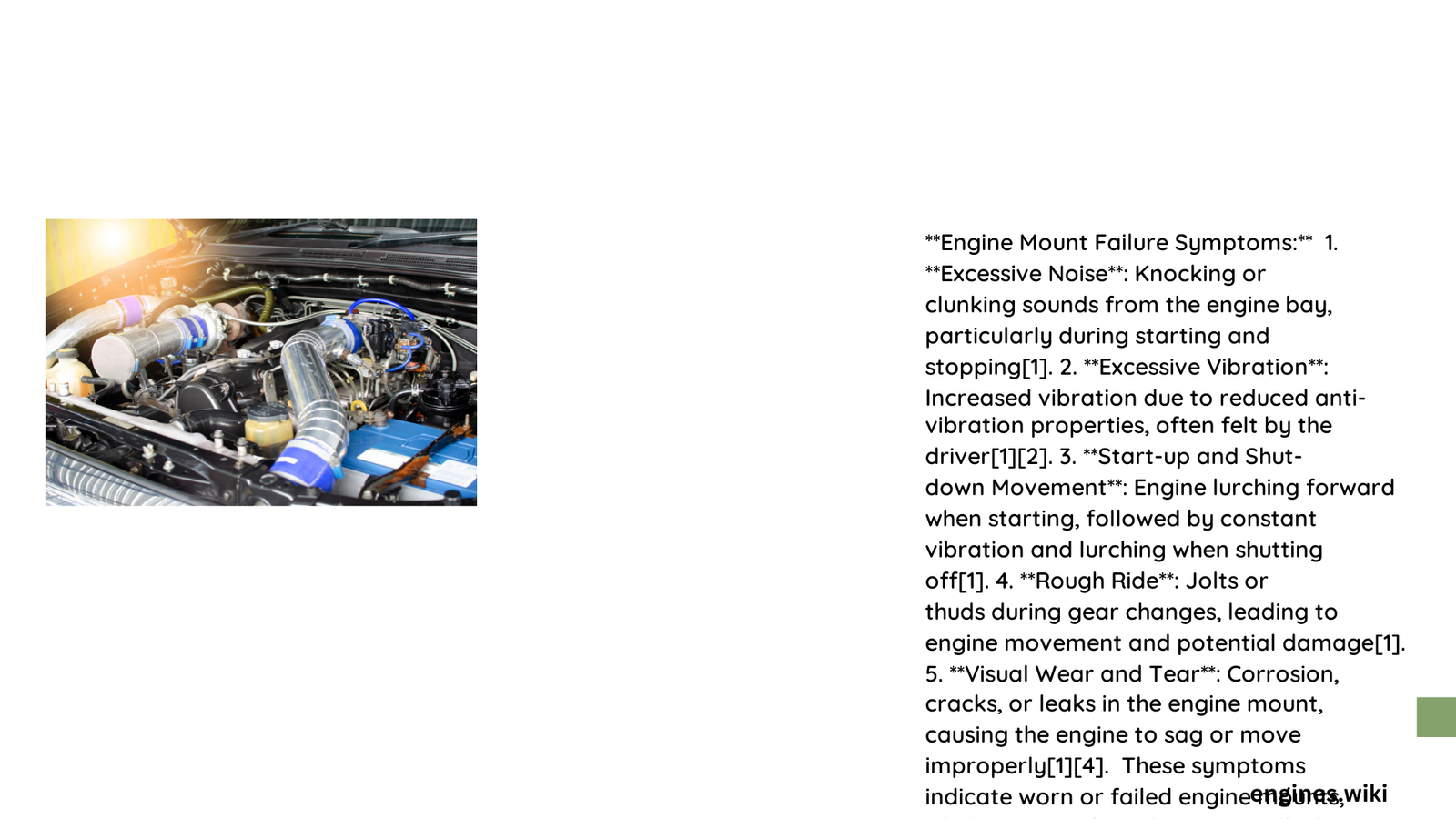Engine support symptoms represent critical warning signs that can indicate potential mechanical failures in your vehicle’s powertrain system. These symptoms manifest through various observable indicators such as unusual vibrations, distinctive noises, and unexpected engine movements that compromise vehicle performance and safety. Understanding these symptoms early can prevent extensive damage and costly repairs, making proactive diagnosis essential for maintaining your vehicle’s operational integrity.
What Are the Primary Engine Support Symptoms?
Identifying Unusual Vibration Patterns
Engine support symptoms often reveal themselves through distinctive vibration characteristics. Drivers might experience:
- Intense Steering Wheel Tremors: Noticeable shaking while driving
- Dashboard Vibration: Persistent trembling near instrument panels
- Seat Oscillations: Unexpected movement during acceleration
Vibration Frequency Analysis
| Vibration Intensity | Potential Cause | Recommended Action |
|---|---|---|
| Low Frequency (1-5 Hz) | Potential Mount Wear | Immediate Inspection |
| Medium Frequency (5-15 Hz) | Partial Mount Failure | Professional Diagnostic |
| High Frequency (15-30 Hz) | Critical Mount Damage | Urgent Replacement |
What Noises Indicate Engine Support Problems?
Distinctive sounds can signal underlying engine support issues:
- Metallic Knocking: Sharp, repetitive sounds during acceleration
- Clunking Noises: Sudden impacts when changing gears
- Rattling Sounds: Persistent background noise during engine operation
How Do Visual Indicators Reveal Support System Failures?
Visual inspection provides crucial insights into potential engine support deterioration:
- Rubber Mount Cracking: Visible fractures or material degradation
- Metal Component Corrosion: Rust or structural weakening
- Asymmetrical Engine Positioning: Noticeable tilting or misalignment
What Diagnostic Techniques Detect Engine Support Symptoms?
Professional mechanics employ multiple strategies:
- Hydraulic Pressure Testing
- Vibration Analysis Equipment
- Comprehensive Visual Inspection
- Load Condition Simulation
What Are Potential Consequences of Ignored Symptoms?
Neglecting engine support symptoms can lead to:
- Accelerated Drivetrain Wear
- Increased Fuel Consumption
- Potential Catastrophic Engine Failure
- Compromised Vehicle Safety
Cost Considerations for Repair
| Repair Component | Estimated Cost Range |
|---|---|
| Individual Mount | $50 – $200 |
| Labor (Per Mount) | $100 – $300 |
| Complete Replacement | $300 – $1,000 |
Preventative Maintenance Strategies
- Regular Professional Inspections
- Timely Mount Replacement
- Avoiding Aggressive Driving Conditions
- Monitoring Vehicle Performance
Conclusion

Recognizing and addressing engine support symptoms promptly can save significant time, money, and prevent potential safety risks. Vehicle owners should remain vigilant, conduct regular inspections, and consult professional mechanics when unusual symptoms emerge.
